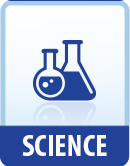|
This section contains 1,222 words (approx. 5 pages at 300 words per page) |

|
Overview
Water is a colorless, odorless, tasteless liquid that also occurs commonly in the solid state (as ice) and in the gaseous state (as steam or water vapor). It is a very stable compound that undergoes a number of important reactions. It reacts with some metals to form elemental hydrogen and an inorganic base. With some metals, such as sodium and potassium, the reaction is quite violent. With other metals, such as iron, the reaction occurs only very slowly. Water is also a weak electrolyte, ionizing to form hydrogen ions (H+) and hydroxide ions (OH−). The hydrogen ions occur in solution as hydronium ions (H3O+).
Key Facts
Other Names:
Hydrogen oxide; dihydrogen oxide
Formula:
H2O or HOH
Elements:
Hydrogen, oxygen
Compound Type:
Inorganic
State:
Liquid
Molecular Weight:
18.02 g/mol
Melting Point:
0°C (32°F)
Boiling Point:
100°C (212°F)
Solubility:
Soluble in ethyl alcohol, methyl alcohol, and acetone...
|
This section contains 1,222 words (approx. 5 pages at 300 words per page) |

|


